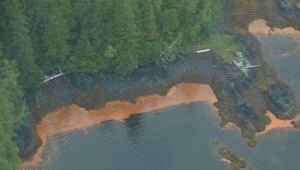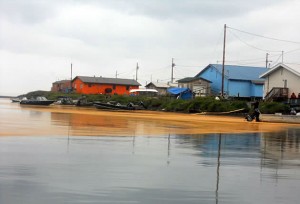
For the sixth summer in a row an orange discoloration has appeared in Alaskan coastal waters. NCCOS scientists provided ‘coastal intelligence’ to officials that these ‘orange tides’ differ; Some result from water borne harmful algal cells, others by air-driven terrestrial fungal spores.
In 2008, NCCOS scientists determined an orange tide in Ketchican came from a bloom of harmful algae, Noctiluca scintillians. Researchers have linked this alga with fish mortality events worldwide, but its toxic compounds do not affect humans. Blooms of Noctiluca repeated the next two summers inKetchican.

In May 2013, U.S. Fish and Wildlife Service Wildlife biologists from the Izembek National Wildlife Refuge observed an orange water discoloration visually similar to the other Alaskan events. NCCOS scientists announced this Alaskan orange tide as a Noctiluca algal bloom not hazardous to coastal residents.
In 2011, an unusual orange tide appeared in the coastal waters of Kivalina, a remote Inupiaq village along Alaska’s northwest coast. Though visually similar to Noctiluca blooms, NCCOS scientists identified it as terrestrial fungal spores driven by wind into coastal waters. Based on NOAA electron micrographs, U.S. and Canadian Forest Service scientists confirmed the spores as spruce needle rust (Chrysomyxa ledicola). “Rust” infects only plants, not people; however, high densities of fungal spores could cause respiratory effects. An orange tide of fungal spore repeated the following summer in the Kachemak Bay National Estuarine Research Reserve.
Discolored waters from harmful algal blooms alarm coastal residents and can quickly threaten their health and the environment. Alaska coastal waters, with many unique ecosystems and 34,000 miles of tidal shoreline, pose unparalleled challenges for coastal preparedness and response. As part of the NOS coastal intelligence network, NCCOS Event Response Program scientists provide actionable information for local decision making.
For more information, contact Steve.Morton@noaa.gov.
